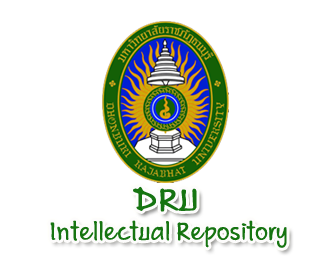Please use this identifier to cite or link to this item:
http://hdl.handle.net/123456789/1874| Title: | Design the High Performance Work System (HPWS) to Align with the Digital Transformation: A Case Study of D Company |
| Authors: | Yitong, Chen |
| Keywords: | digital transformation high-performance work systems digital HR Dhonburi Rajabhat University |
| Issue Date: | 2024 |
| Publisher: | Dhonburi Rajabhat University |
| Abstract: | The objectives of this study were as follows: 1) to analyze the current situation of human resources in Company D; 2) to design a high-performance work system that meets Company D's digital management. The researcher used a mixed research method to collect questionnaires from 180 employees about human resource management after the digital transformation and conducted interviews with 15 middle and high level managers to analyze the internal and external environments. External factor analysis (EFA) and internal factor analysis (IFA) were used to analyze Company D's strengths, weaknesses, opportunities, and threats. Then, SWOT and TOWS analyses were conducted to develop a high-performance work system in line with the digital transformation so that Company D could be sustainable The results indicated that: 1) company D's human resource management underwent significant changes, transitioning from a state-owned enterprise to an independent entity. The adoption of strategic human resources and the introduction of a three-pillar HR structure marked key milestones. Challenges included a dilemma between advanced tools and backward systems, virtual promotion channels, and declining profitability. To address these issues, the company explored a high-performance work system (HPWS). However, achieving consistency across diverse business units remained a challenge. Current efforts focused on aligning HR practices with a high-performance work system to optimize organizational performance, led by HR Business Partners and; 2) designed an HPWS tailored to D Company's past needs and digital transformation efforts. Key components included enhancing employee work engagement through a digital social platform, collaboration tools, and engagement programs. For employee selection, we proposed a digital recruitment process, video interviews, and online aptitude tests. The training and development aspect involved an online learning platform, individualized development plans, and regular skills assessments. The performance management system integrated a goal management system, real-time feedback tools, and data analytics, Employee benefits were managed through an online platform offering personalized benefits, health and wellness programs, and support for flexible working arrangements. The HPWS aimed to provide comprehensive employee insights and decision support while ensuring data security and privacy compliance. It was designed to evolve and optimize over time to meet organizational and digital landscape changes, ultimately enhancing job satisfaction, performance, and contributing to organizational success |
| URI: | http://hdl.handle.net/123456789/1874 |
| Appears in Collections: | Thesis Dhonburi Rajabhat University - วิทยานิพนธ์ปริญญาโท มหาวิทยาลัยราชภัฏธนบุรี |
Files in This Item:
| File | Description | Size | Format | |
|---|---|---|---|---|
| Title 1.pdf | Title 1 | 87.62 kB | Adobe PDF | View/Open |
| Title 2.pdf | Title 2 | 68.98 kB | Adobe PDF | View/Open |
| Abstract.pdf | Abstract | 117.28 kB | Adobe PDF | View/Open |
| Acknowledgement.pdf | Acknowledgement | 72.94 kB | Adobe PDF | View/Open |
| Table of content.pdf | Table of content | 164.22 kB | Adobe PDF | View/Open |
| Unit 1.pdf | Unit 1 | 845.34 kB | Adobe PDF | View/Open |
| Unit 2.pdf | Unit 2 | 1.58 MB | Adobe PDF | View/Open |
| Unit 3.pdf | Unit 3 | 282.86 kB | Adobe PDF | View/Open |
| Unit 4.pdf | Unit 4 | 2.39 MB | Adobe PDF | View/Open |
| Unit 5.pdf | Unit 5 | 1 MB | Adobe PDF | View/Open |
| Bib.pdf | Bib | 728.94 kB | Adobe PDF | View/Open |
| Appendix.pdf | Appendix | 1.31 MB | Adobe PDF | View/Open |
Items in DSpace are protected by copyright, with all rights reserved, unless otherwise indicated.
